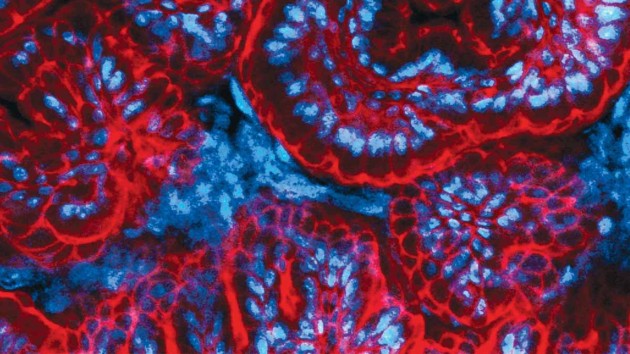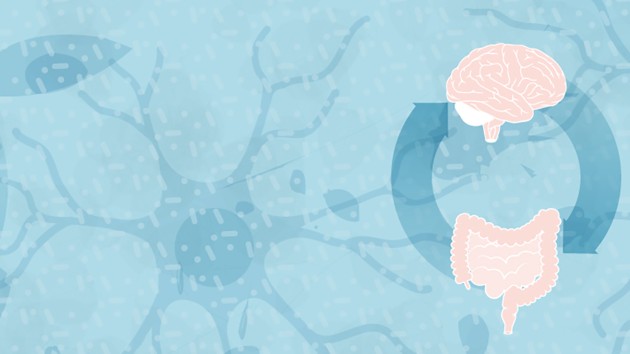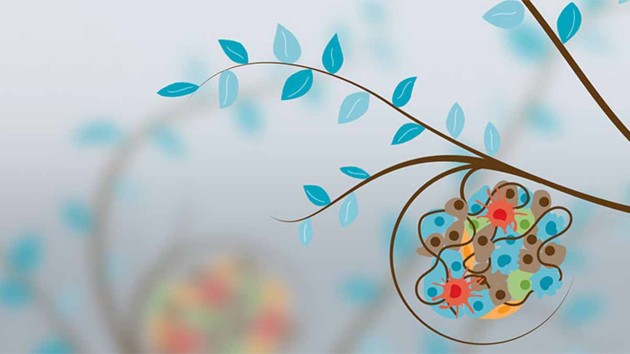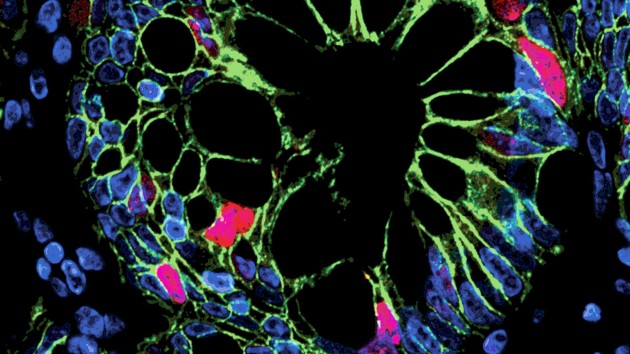Collection |
Collections
Filters
-
Collection Type
-
-
Collection |
 Organoid research
Organoid research
Organoids are 3D organ models with remarkable potential in basic and translational research. This collection showcases research articles, reviews and protocols from across the Nature journals to highlight the striking advances made.
Image: Nick Barker and Marc Leushacke -
Collection |
 Gut-brain axis
Gut-brain axis
Collection of articles from the Nature Research journals covering advances in understanding the gut-brain axis.
Image: Laura Marshall -
Milestone |
 Antibodies
Antibodies
Nature Milestones in Antibodies, presented by Nature Immunology, Nature Reviews Immunology, Nature Structural & Molecular Biology and Nature Communications, highlights some of the most influential developments in the history of antibody research.
-
Collection |
 Cancer Evolution
Cancer Evolution
In this collection, the cancer editorial community of the Nature journals presents the most recently published articles on cancer evolution. The topic is discussed from different angles (preclinical, translational and clinical), and across a range of tumour types.
-
Focus |
Aging
Aging is associated with functional impairments in cellular pathways controlling genomic stability, proteostasis and metabolism, and is a major risk factor for several of the most prevalent diseases. This series of Reviews and Perspectives highlights the recent data that point toward the specific molecular pathways that are perturbed during aging and discuss potential ways to manipulate these pathways to prevent or alleviate age-related diseases.
-
Focus |
Inflammatory Disease
There is an emerging understanding of how the disruption of immune homeostasis may lead to the development of chronic inflammatory diseases. This series of articles highlights new data that point toward the influence of environmental factors and addresses recent advances in our knowledge of the cell types and signaling pathways involved in inflammatory disease onset and progression.
-
Focus |
Regenerative Medicine
Research in regenerative medicine is advancing toward the goal of repairing damaged tissue and organs. Nature Medicine and Nature Biotechnology present a collection of reviews, features and commentaries that explore our current mechanistic understanding of stem cells, and the emerging technologies that will bring regenerative medicine to the clinic.
-
Focus |
Targeted Cancer Therapies
At the interface between basic and clinical sciences, we move steadily toward a better understanding and treatment of cancer. Nature Medicine is proud to present a collection of Reviews on some of the most exciting current trends in cancer research.
-
Collection |
Chronic pain
Chronic pain is estimated to affect over one-quarter of the world's population, and presents a considerable therapeutic challenge. This Nature Collection brings together articles from Nature,Nature Medicine,Nature Neuroscience,Nature Reviews NeurologyandNature Reviews Neurosciencethat highlight recent advances towards understanding the risk factors and mechanisms that underlie chronic pain, and developing effective, non-addictive treatments for this highly prevalent condition.
-
Focus |
Asthma
Asthma affects an estimated 300 million people worldwide. Despite the availability of therapies for symptomatic control of the disease, a significant fraction of patients remain refractory to treatment and progress to severe asthma. This series of reviews highlights recent advances in our understanding of asthma pathogenesis, clinical presentation of disease, and novel therapies aimed at targeting pathologic mechanisms initiating and sustaining allergic inflammation.
-
Focus |
Cancer Immunology
The January 2012 special issue presents two important strategies for generating potent and lasting anti-tumor immunity. The first strategy is to subvert immune suppressive networks in the tumor microenvironment. The second strategy is to optimize conventional and anti-biological modalities to directly target tumor and adjacent tumor tissue, and mobilize and expand anti-tumor immunity in the tumor microenvironment which results in tumor eradication. Further background information on this important topic is available through the accompanying web focus which links to related articles from across Springer Nature.

 Stem cells from development to the clinic
Stem cells from development to the clinic